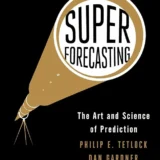Maimonides, a Jewish scholar and Rabbi (which are pretty much the same things: he was an astronomer too…) once developed a “hierarchy of charitable giving”. He essentially analyzed the different kinds of charity that people extended and attempted to define the different types and then ordered them from least to most selfless. He ended up with 8 different levels of giving. The lowest form of charity is giving grudgingly – forced to hand over a dollar to the street bum because he’s blocking your path. The highest form is giving before it is even needed (my father thought that included my allowance….).
I mention this because, as a result of all of the discussion regarding slates vs recommended readings lists, I thought that a similar hierarchy of the levels of recommending might be instructive.
(From here on out, “C#” refers to a charitable giving level and “R#” refers to a recommendation list level. The lowest number equals best, highest, worst.)
C1, R1. We can recommend, and do so, before it’s needed, all the time. “Hey, I just read this fabulous book, check it out!”. Unsolicited reviews also fill this bill.
C2. The second best form of giving charity is doing so anonymously: the giver doesn’t know who is benefiting, the recipient doesn’t know who gave it to them. You wake up in the morning to find enough cash to cover your rent in an unmarked envelope pushed under your door. The giver wants no credit, no thank yous, does not want to impose any obligation. The recipient has no one to thank, no one they’ll feel beholden to, no one to feel shame or guilt or obligation to.
R2. While not a direct analogue, the highest form of recommending is the open, crowd-sourced list. Such lists restrict themselves to a very high-level remit, such as “what science fiction do you recommend?” or “what works have you read lately that’d you’d recommend?” or even “what are you reading now and what do you think of it?” and then lets anyone who desires to participate to do so.
C3. The next level of charity is defined as “donor aware, recipient unaware”. In other words, the donor knows who or what their charity is being devoted to.
R3. Again we find an analogue in recommendation lists. These are open source lists that present themselves with a little up-front restriction – not on who can recommend, but on what they can recommend. Such lists might be “what short fiction science fiction released this year do you recommend?” The recommendation list has some kind of purpose, a focus, that, however mildly, restricts what the recommender will select to put on the list.
C4. Next level of charity? The donor is aware and the recipient has some clue as to the source.
R4. Our analogue in recommending takes this form of expression: a recommendation list that remains open to all participants, but one that is focused on a specifically stated purpose, such as “what works do you recommend for the X Award this year”?
Once again, the participant’s recommendations are restricted to some specific purpose, this time more clearly defined. The recipient of the list knows its purpose.
C5. The next level of charity is giving directly: both recipient and donor are aware of who is doing what.
R5. Although not as good a match, recommendation lists that restrict the nature of the participants is somewhat analogous: only certain individuals can participate, though things are unrestricted within the chosen group. This might be likened to recommendations within a club or organization, that are then made public.
C6. Further on down the charity list: giving directly when asked. You had to be prompted, but you do so willingly once you recognize the need.
R6. An equivalent recommendation list would be one in which participants are compelled in some fashion or other to make recommendations – ones they freely choose. “Everyone has put something on the list: we want 100% participation. You need to get your recommendations in by X date.”
C7. Giving when asked, but less than one should give. (I’m not so sure about this one: does it include offering a cigarette when one has no cash?) This probably ended up towards the bottom of the hierarchy because the giver makes a conscious decision not to entirely meet the need, but still makes themselves feel good for having given something.
R7. Here’s where we enter quasi-slate territory. Recommendations are open (even if for a stated purpose), but the final results are withheld in some fashion or another. The “donor” has made the conscious decision that recipients of the list need guidance and therefore the recommendations are curated – not fully handed over – in some fashion or other. The degree of influence on the recommender is high: restricted purpose, restricted outcome.
Finally, C8, the lowest form of charity: giving grudgingly. Usually with resentment thrown in. (Your mother says you need an allowance whether you deserve it or not.)
R8. Naturally, the full-on slate would be the equivalent here. Only a select few make “recommendations” and then use some form of persuasion to gain acceptance of the list by others not participating in the recommending.
Like charity, recommending works (especially for awards) is something that should be done gladly and with no thought given for a return.
Steve Davidson is the publisher of Amazing Stories.
Steve has been a passionate fan of science fiction since the mid-60s, before he even knew what it was called.










I need to pull out my Maimonides as some of your levels of giving aren’t matching my memory. Not a bad attempt at an analogy. Food for thought.